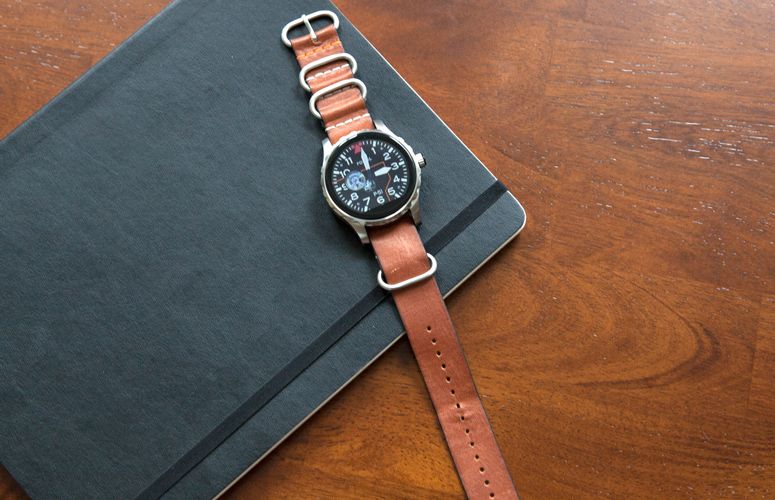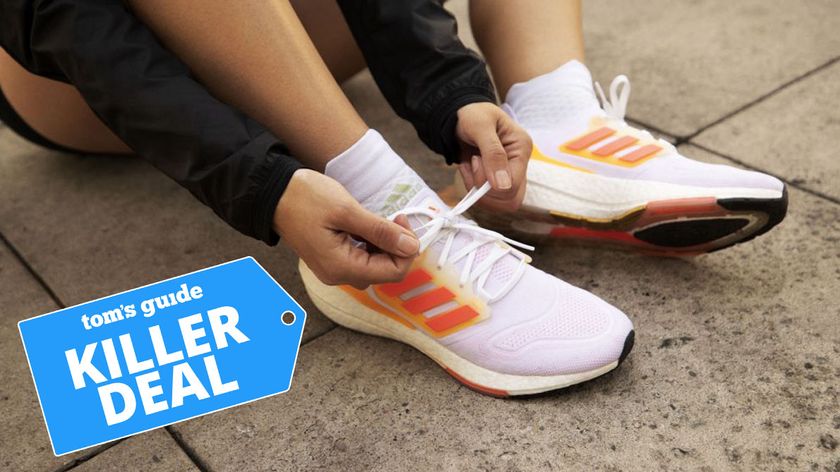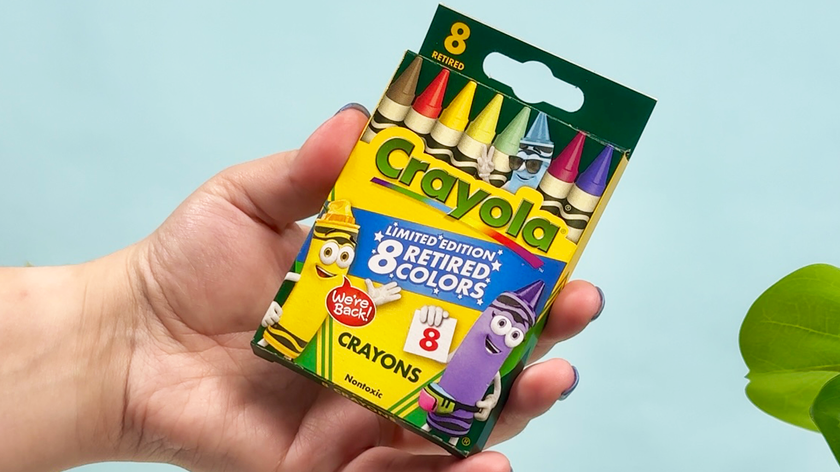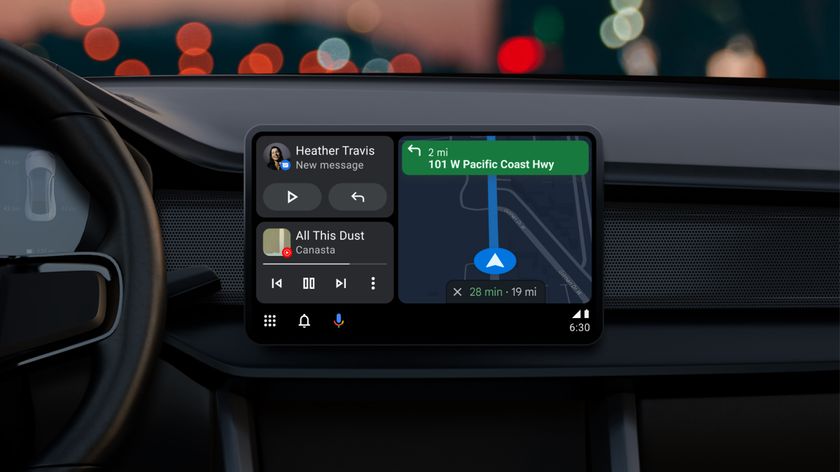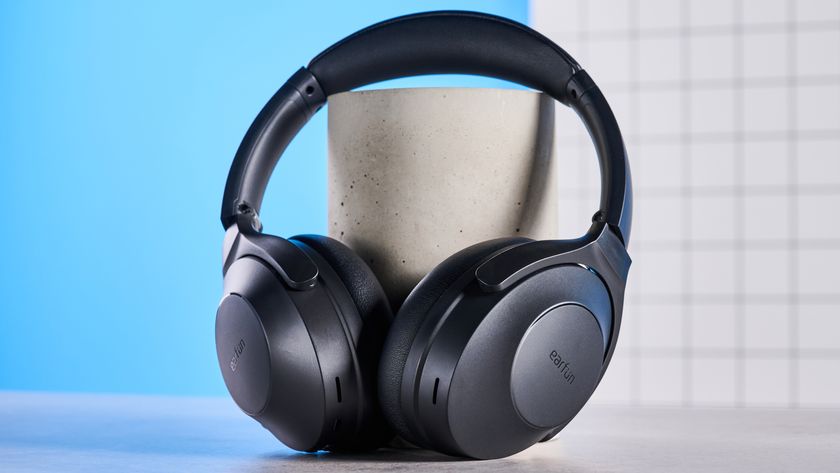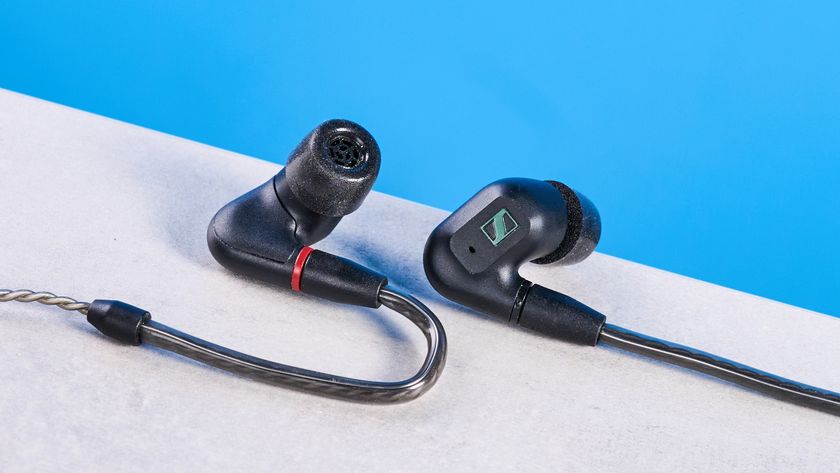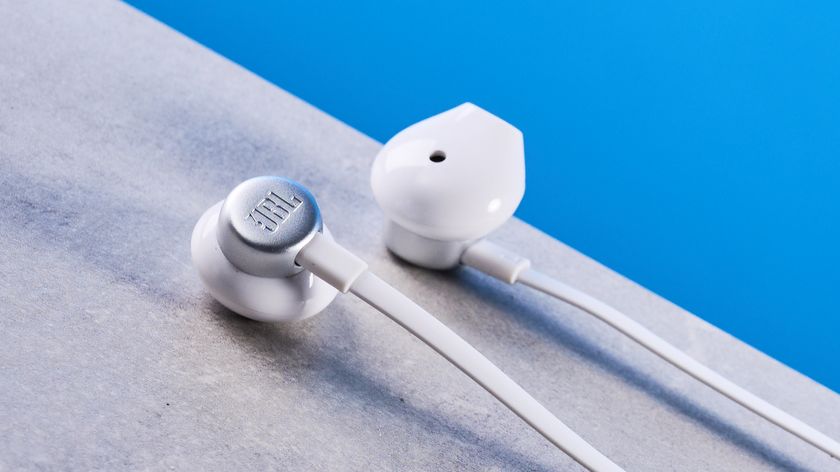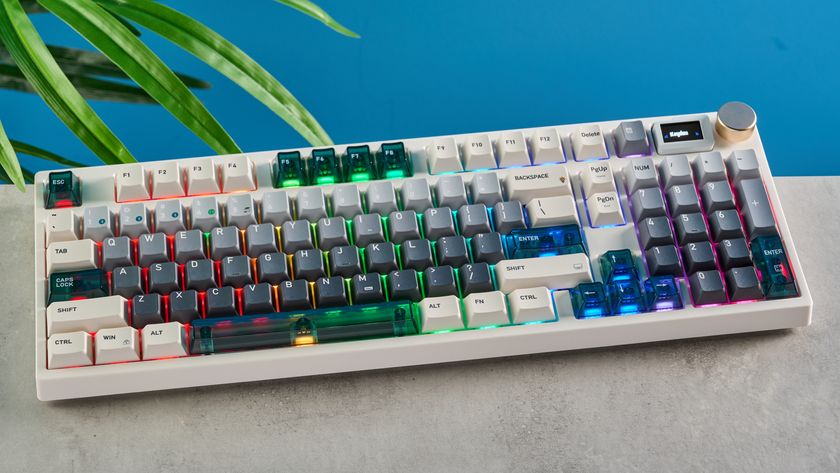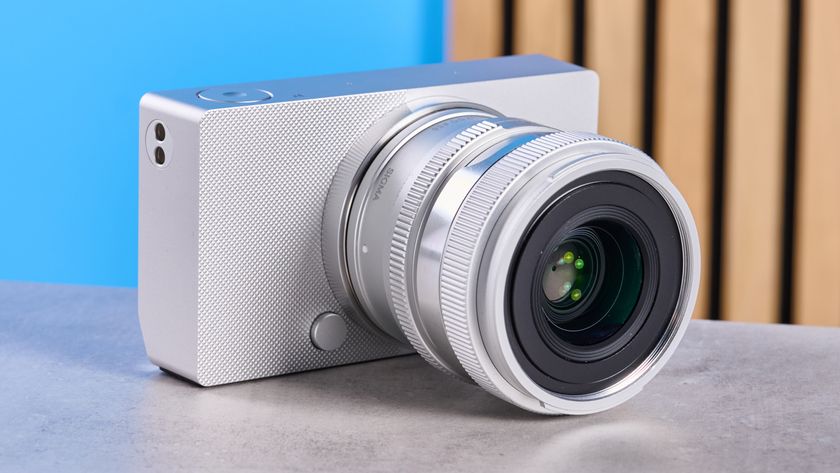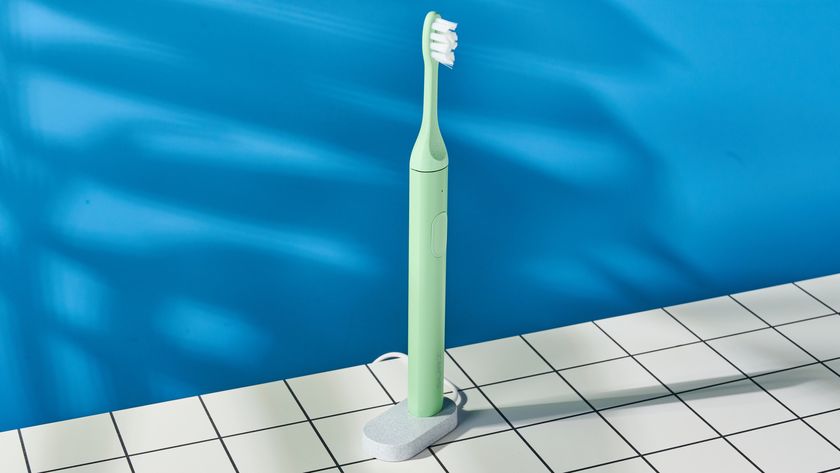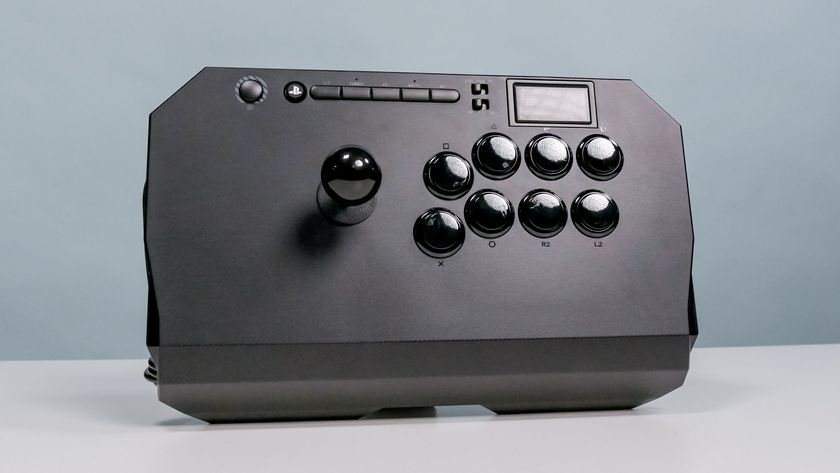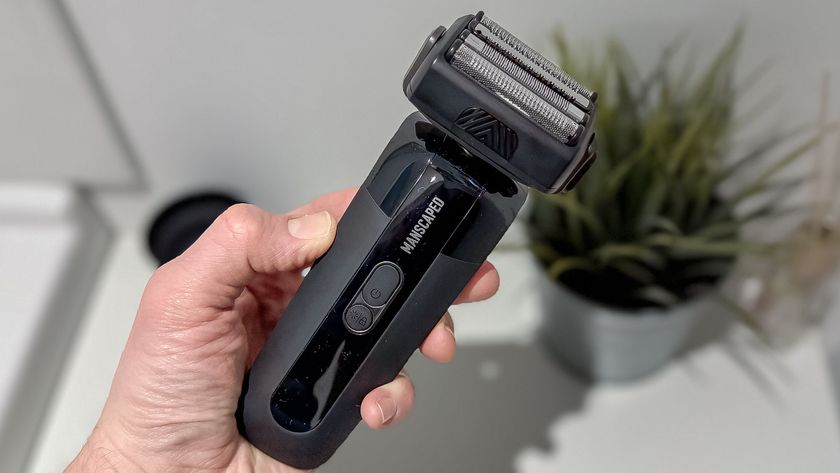Tom's Guide Verdict
The Fossil Q Marshal smartwatch places its emphasis on looks, but doesn't even get that right.
Pros
- +
Attractive case
- +
Comes with metal and leather straps
- +
Small wireless charger
Cons
- -
"Flat tire" display looks bad
- -
Lacks NFC, heart rate monitor
- -
Crown does not rotate
Why you can trust Tom's Guide
Despite all the technology that goes into them, smartwatches are, essentially, pieces of jewelry that are an expression of your tastes as much as they are a way to tell time. And, with most Android Wear smartwatches running the same software with the same processor, a lot hinges on the look of the watch itself. As befitting its heritage, Fossil smartwatches such as the Q Marshal place an emphasis on looks rather than specs. This wouldn't be such a bad thing — if Fossil got the looks right.
Design: So good, but so bad
Not made for small wrists, the Q Marshal has a large, 45-millimeter case that's 0.55 inches thick, but otherwise it offers an attractive design that's strong yet graceful.
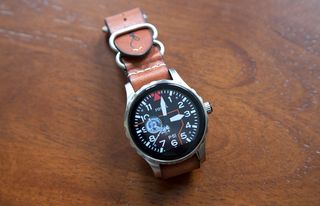
Similar to the Samsung S3 Frontier, the top of the Q Marshal' has a scalloped edge, which adds a little visual interest to the brushed stainless-steel case. Unlike the Samsung Gear S3 Frontier, though, the bezel does not rotate.
The biggest disappointment has to be the Q Marshal's display.
For that matter, neither does the crown, a very curious — and frustrating — design decision. While you can press the crown's button to get to the Settings menu, the ridged edges of the crown practically invite you to give it a spin, which makes not being able to do so unsatisfying.
The biggest disappointment, though, has to be the Q Marshal's display. For a second-generation smartwatch — and for one that places such an emphasis on style — the "flat tire" screen, where the bottom portion is sliced off, is a real letdown. Apart from the aesthetics, it actually compromises many of the otherwise attractive watch faces. For example, the 6 on some of the faces is cut in half.
The Q Marshal's resolution of 360 x 300 pixels is roughly the same as the Gear S3's, but the latter's AMOLED display, coupled with a smaller size (1.4 inches vs. 1.3 inches) makes text and watch faces look crisper, brighter and more colorful. The LG Watch Sport's 1.38-inch P-OLED display has a higher resolution than both, at 480 x 480 pixels. Did I mention the Gear S3 and the LG Watch also have fully round displays, too?
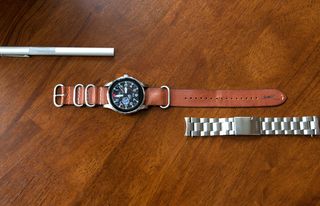
Fossil offers five versions of the Q Marshal. The Brown Leather ($255) has a brown leather strap (natch) and a blue stainless-steel body. Black Silicone ($255) has, as you would expect, a silicone strap and black body. Stainless Steel ($275) has a stainless-steel band and face, as does the Smoke Stainless Steel ($275), but it's slightly darker. The $325 Cory Richards version of the Q Marshal comes with two bands: one stainless steel, and the other brown leather with white and orange stitching. Both complement the watch well.
Similar to the S3 Frontier and LG Watch Sport, the Q Marshal is IP67-rated to withstand being submerged in 1 meter (about 3 feet) of water for up to 30 minutes. The Apple Watch Series 2, however, can be dunked to a depth of 164 feet (50 m).
Not Much Inside
Like most new smartwatches, the Q Marshal is powered by a Qualcomm Snapdragon Wear 2100 processor, with 512MB of RAM and 4GB of flash memory. It also has Bluetooth 4.1 and 802.11b/g/n Wi-Fi, but that's about it.
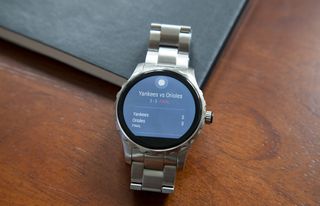
Unlike the Gear S3 Frontier, the Q Marshal lacks a heart rate monitor, GPS and a cellular radio. It even lacks NFC, so you can't use it for mobile payments.
Android Wear 2.0
The Q Marshal runs the second generation of Google's Android Wear operating system. This version has some nice improvements over Android Wear 1.0, but also demonstrates just how far the platform needs to go.
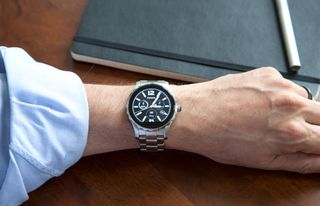
On the plus side, Android Wear 2.0 supports always-on screens, so you don't have to move your wrist to wake the display just to tell the time. The OS also makes it easy to change the watch face. Simply swipe left or right, and you can pick another face. It's almost too convenient, however — too often, I would inadvertently change the watch face when I wanted to look for an app.
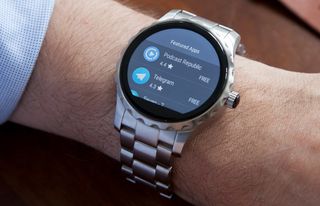
Other benefits include the ability to download apps directly to the watch, rather than having to use the Android Wear manager on your smartphone. While not all Android Wear apps are available to download this way, some is better than none. And, if you're using the Q Marshal with an iPhone, this is the only way to get apps on the watch.
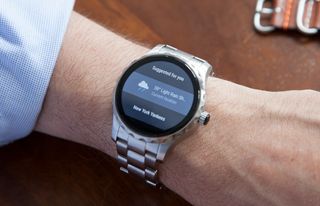
While Android Wear 2.0 brings increased compatibility with iPhone owners, it's unlikely to win any Apple Watch converts. While you can use the watch to read emails and notifications, you can't respond to anything.
You'll need to take the wireless charger if you plan to travel overnight, as the Q Marshal will only make it through a day on a charge.
For more on Android Wear 2.0, check out our handy guide.
Battery Life
I like that Fossil has shrunk the charger from the unwieldy pillow-like one found with the original Q Founder to a small disk. While the magnets that hold the wireless charger in place could be stronger, it's much more convenient to carry on trips. And you'll need it if you plan to travel overnight, as the Q Marshal, like pretty much every other smartwatch I've tested, will only make it through a day.
Bottom Line
I could live with a smartwatch that didn't have all the latest features, like GPS and a cellular connection. But you have to get the basics right, and on that front, the Q Marshal's screen drags the rest of the watch down with it. If you like the look of Fossil's watches, wait until the fall for the Q Venture or the Q Explorist, which will have fully round displays, and will sell for around $275. The Q Marshal, however, just doesn't tick.

Michael A. Prospero is the U.S. Editor-in-Chief for Tom’s Guide. He oversees all evergreen content and oversees the Homes, Smart Home, and Fitness/Wearables categories for the site. In his spare time, he also tests out the latest drones, electric scooters, and smart home gadgets, such as video doorbells. Before his tenure at Tom's Guide, he was the Reviews Editor for Laptop Magazine, a reporter at Fast Company, the Times of Trenton, and, many eons back, an intern at George magazine. He received his undergraduate degree from Boston College, where he worked on the campus newspaper The Heights, and then attended the Columbia University school of Journalism. When he’s not testing out the latest running watch, electric scooter, or skiing or training for a marathon, he’s probably using the latest sous vide machine, smoker, or pizza oven, to the delight — or chagrin — of his family.
